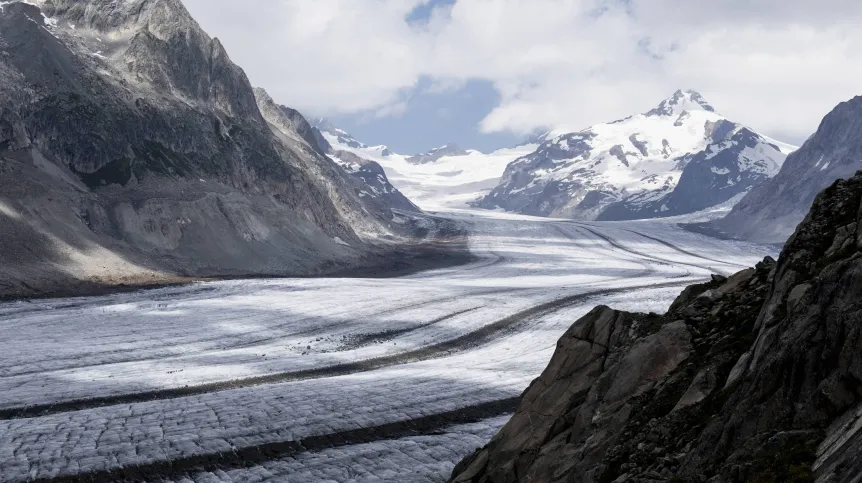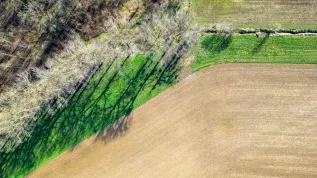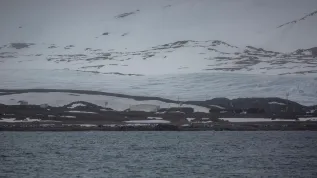
Glacial melting is advancing fastest in Europe, where relatively small mountain glaciers have lost up to 38.7% of their mass over the past 24 years, according to scientists.
“On a global scale, glacial melting changes are currently most visible in Europe, on relatively small mountain glaciers. They respond much faster to climate change and are good indicators of climate changes,” said Bartłomiej Luks from the Institute of Geophysics of the Polish Academy of Sciences.
New data from Glacier Monitoring Switzerland (GLAMOS) show that Swiss glaciers lost 3% of their mass in the last 12 months — the fourth-largest annual decline on record. Although not as extreme as in 2022 and 2023, when losses reached 5.9% and 4.4% respectively, the trend remains stark.
The past decade has been the worst in history for Swiss glaciers, which have shrunk by a quarter since 2015. GLAMOS reports that about 100 glaciers in Switzerland disappeared between 2016 and 2022, and most of the remaining ones could vanish by the end of the century.
Luks noted that the melting trend is global. “There are almost 200,000 glaciers in the world, but only a few hundred of them are regularly monitored. This year, Nature published an analysis from 2000–2023 on changes in the mass balance of glaciers around the world. It shows that approximately 5.4% of their mass has disappeared globally compared to 2000,” he said.
In Europe, the most significant losses have occurred in the Alps and Pyrenees, where glaciers have lost 38.7% of their mass in just over two decades. Their small size makes them more responsive to temperature shifts, but also more vulnerable. Containing impurities and rock fragments, their darker surfaces absorb more sunlight, accelerating melting.
Melting is also visible in the Arctic. “Due to the fact that this is the high Arctic, these changes are not that rapid, but we see them on the scale of the entire archipelago. This mass loss is at the level of 5 percent, but remember that sixty percent of the entire Svalbard is covered with glaciers, so there is also a lot of water produced from glaciers,” Luks said.
The consequences of glacier loss extend far beyond rising sea levels. “Glaciers in the Alps are becoming less and less stable. This is related to their melting, but also to the fact that their substrate is changing, the permafrost on mountain slopes is destabilizing and catastrophic landslides happen more and more often,” Luks warned.
He added that many communities rely directly on water from the cryosphere — glaciers, permafrost, and snow. “This concerns, for example, the production of electricity in hydroelectric plants in Greenland, Norway and Italy. It also affects the availability of drinking water, which is extremely important, e.g. in the Himalayas, where over a billion people depend on water from the changing cryosphere, snow and glaciers. Similarly, in South America and Europe, we use water resources stored in the cryosphere,” he said.
The Institute of Geophysics of the Polish Academy of Sciences launched the LIQUIDICE project in February under the EU’s Horizon Europe programme.
The initiative, involving 19 partner institutions, aims to study future changes in water resources linked to the cryosphere and their impact on global water security.
Meanwhile, researchers from the University of Bristol and the University of Innsbruck modeled glacier evolution up to the year 2500 under an “overshoot” scenario, in which global temperatures temporarily rise 3°C above pre-industrial levels before falling back to 1.5°C. In this case, glaciers would lose 16% more mass than under the Paris Agreement target.
Large polar ice sheets could take millennia to recover, while smaller glaciers — including those in the Alps, Himalayas and Andes — may only begin to regrow by 2500.
Ewelina Krajczyńska-Wujec (PAP)
ekr/ bar/ mhr/
tr. RL













